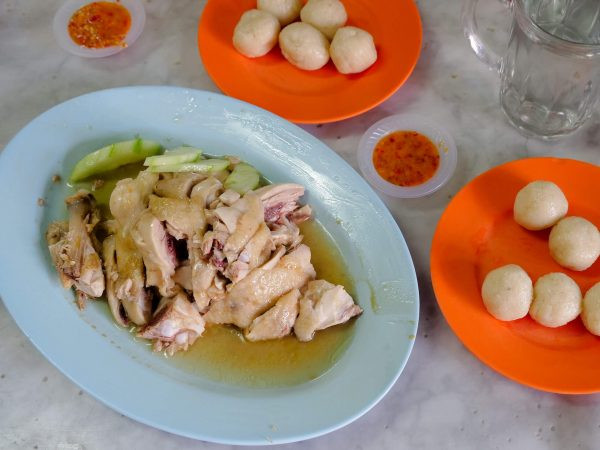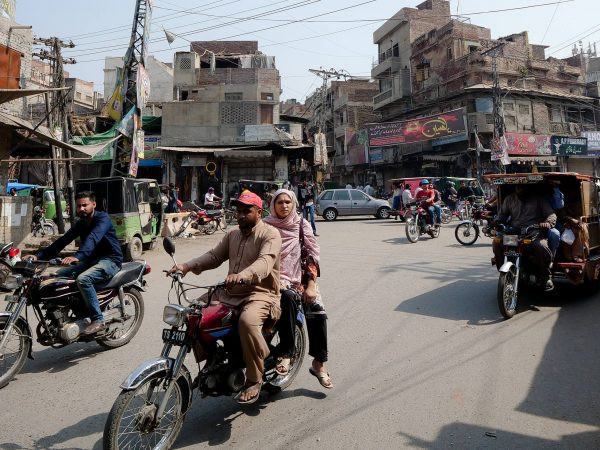Seoul, a city that pulsates with energy at every corner, is a true paradise for food enthusiasts. While its restaurant scene is undeniably captivating, the real culinary heart of Seoul beats within its vibrant street food stalls and tents. Imagine strolling through bustling streets, each turn revealing a tempting array of flavors and aromas – this is the everyday reality of exploring Seoul’s street food scene.
From the moment you arrive, you’ll be swept away by the sheer variety. It’s like navigating a delicious maze where every path leads to a new and exciting snack. If you consider yourself a snacker, prepare to be in your element in South Korea!
Unlike street food cultures in some other Asian countries where you can easily assemble full meals on the go, Korean Street Food in Seoul often leans towards the snack spectrum. Think of them as perfect bites to keep you energized as you navigate the city’s dynamic pace, especially for Seoulites dashing between subway stations. Foods served on sticks or easily enjoyed with toothpicks are incredibly popular and convenient.
The street food carts themselves are a sight to behold – robust and thoughtfully designed, almost like mobile kitchens on wheels, ready to serve up deliciousness.
Gimbap (김밥): The Korean Seaweed Rice Roll
Gimbap, a staple in South Korean cuisine, is a must-try whether you dine in a restaurant or explore the streets. Street carts often feature mountains of gimbap alongside tteokbokki, making it a perfect pairing. This iconic snack starts with a sheet of dried seaweed, meticulously layered with rice, colorful pickled vegetables, and a slice of savory egg. The street version is typically prepared in advance and wrapped in plastic to maintain its delightful moisture and soft texture.
What truly elevates street-style gimbap is the generous sprinkle of toasted sesame seeds on top, adding a nutty aroma and satisfying crunch!
A serving, usually containing 4 to 6 bite-sized rolls, is incredibly affordable, typically around 1,500 Won (approximately $1.32 USD).
 Gimbap, a quintessential Korean street food, featuring seaweed rice rolls filled with vegetables and egg, ready to be enjoyed as a quick and tasty snack.
Gimbap, a quintessential Korean street food, featuring seaweed rice rolls filled with vegetables and egg, ready to be enjoyed as a quick and tasty snack.
Here’s a glimpse of the restaurant or takeout presentation of gimbap, often slightly more elaborate but equally delicious.
Cost: Generally around 1,500 Won ($1.32 USD) per roll.
Jjinmandu (찐만두) or Mandu (만두): Korean Steamed Dumplings
Korean mandu, or dumplings, are a beloved treat enjoyed in both formal restaurants and casual street settings. These particular steamed dumplings, known as jjinmandu, were displayed invitingly in the open air, their warmth and aroma practically beckoning passersby.
Cost: Expect to pay around 3,000 Won ($2.63 USD) for a plate of 3 to 5 generously sized mandu dumplings.
Venturing into Myeongdong, Seoul’s renowned shopping district, you’ll discover an abundance of trendy and delectable street food innovations. This plate of deep-fried dumplings, found in Myeongdong, was expertly sliced with scissors, piled high with fresh shredded cabbage, and generously drizzled with a flavorful combination of tomato chili and teriyaki sauces.
Twigim (튀김): Korean Deep-Fried Delights
Deep frying reigns supreme as a globally cherished street food cooking technique – delivering that irresistible combination of crunch, satisfying greasiness, and intense flavor. Virtually every culture has embraced deep frying in some form, and Korea is no exception, offering a wide array of deep-fried goodness.
Resembling Japanese tempura in style, twigim is a deep-fried lover’s dream – slices of vegetables, and sometimes seafood, battered and fried to crispy perfection, ready to be ordered and enjoyed right on the street. Twigim is also a fantastic accompaniment to a cold beer!
Tornado Potato: The Swirling Sensation
Myeongdong, attracting millions of visitors daily, is a hotbed for Korean street food innovation, constantly introducing exciting new snacks.
One such trendy item, adored by both locals and tourists, is the tornado potato. This visually stunning snack features a whole potato expertly spiral-cut, stretched out on a stick, deep-fried until wonderfully crunchy, and then sprinkled with an addictive, MSG-enhanced cheesy powder.
A tornado potato is essentially the perfect marriage between French fries and potato chips, offering the best of both worlds.
These swirling treats have become so popular that they’ve even made their way to the streets of Bangkok!
Cost: Around 2,000 Won ($1.75 USD).
Korean French Fry Hot Dog: A Deep-Fried Duo
Do you love the classic pairing of hot dogs and French fries?
Korean street food vendors have ingeniously combined these favorites by wrapping a hot dog in French fries and deep-frying the entire creation. While it might visually resemble a medieval mace, rest assured, it’s far more delicious.
Tornado Potato Wrapped Hot Dog: Deep-Fried Indulgence
This snack is definitely not for the faint of heart or the health-conscious!
It’s a long, slender hot dog enveloped in the same spiral-cut potato as the tornado potato, deep-fried in the same oil, and served exclusively for devoted deep-fried food fanatics.
Hot Dogs: Korean Style
South Koreans have a clear passion for hot dogs, and their street food interpretations are diverse and flavorful. These bite-sized hot dogs, often plump and juicy, are stuffed with various fillings, sometimes wrapped in crispy bacon, and cooked in their own flavorful juices before being skewered for easy serving.
While I didn’t personally try these on this trip, the happy expressions of those indulging in them suggested they were a delightful treat.
Deep Fried Dumplings (Hotteok 호떡): Sweet and Savory
Deep-fried dumplings are almost universally appealing, and hotteok takes this concept to a delightful level. These are reminiscent of Korean street food “samosas,” boasting a tasty filling encased in a wonderfully crunchy outer layer.
Served piping hot straight from the fryer, these deep-fried dumplings are placed in a small paper cup, making them easy to eat on the go, almost like a savory ice cream cone.
Cost: Typically around 1,000 Won each ($0.88 USD).
Squid and Octopus Stand: Seafood Sensations
No exploration of Seoul street food is complete without encountering the tantalizing tentacles of fried and dried octopus and squid. These seafood offerings are truly some of the most flavorful and texturally pleasing items from the sea that you can find on the streets.
Seoul street food carts often showcase a diverse selection of squid and octopus preparations, ensuring there’s something to satisfy every seafood craving.
Here’s a closer look at an octopus candy cart, highlighting the variety available. If you’ve ever enjoyed “tako” in Hawaii, you’ll undoubtedly appreciate the smoky and savory flavors of Korean smoked octopus – truly delicious!
Soondae 순대 (Sundae): Korean Blood Sausage
This South Korean dish might not be for everyone, but for those who appreciate the unique flavors of blood sausage, Korean soondae is a delightful discovery. Often mixed with sticky rice or transparent noodles, the Korean version offers a fluffy, spongy texture, packed with a rich, savory, and slightly earthy flavor.
Often, vendors will also generously add slices of steamed lungs on top, adding another layer of texture and flavor.
Cost for a generous plate: Around 6,000 Won ($5.26 USD) at the bustling Gwangjang Market.
Tteokbokki 떡볶이: The Spicy Rice Cake Staple
One of the most iconic and ubiquitous Korean street food dishes is tteokbokki. From the moment you step into any lively area of Seoul, you’ll inevitably spot these vibrant red rice cakes simmering away, resembling molten lava.
Just as every country has its quintessential street food – like kottu in Sri Lanka or laphet thohk in Burma – for Korea, it’s undeniably TTEOKBOKKI!
The chewy rice cakes, similar in texture to Italian gnocchi, are generously coated in Korea’s signature addictive red chili sauce, gochujang.
Don’t be intimidated by the fiery red color; tteokbokki is often more flavorful than intensely spicy, offering a satisfying kick without being overwhelming for most palates.
Cost: A plate of tteokbokki typically ranges from 2,500 to 4,000 Won ($2.19 – $3.51 USD).
Here’s a closer look at these blood-red rice cakes – the portion I enjoyed even included a hard-boiled egg. When served on the street, tteokbokki often comes on a plastic-wrapped plate for convenience.
Giant Cream Puff: An Oversized Indulgence
If these cream puffs weren’t so remarkably enormous, I might have resisted… but their sheer size made them utterly irresistible. The pastry itself was decent, though not exceptionally fresh, and the custard filling, while plentiful, had a slightly artificial texture – not the best cream puff experience overall.
Cost: 2,000 Won in Myeongdong ($1.75 USD).
Cracker Bread: A Simple and Sweet Treat
Reminiscent of Egyptian diet bread, this thin, cracker-like Korean pita bread was filled with a subtle, sweet filling that lightly coated the inner edges.
It was simple yet satisfying, the kind of light snack that would pair perfectly with a cup of rich, sweet Vietnamese coffee.
Cost: 2 for 1,000 Won ($0.88 USD).
Korean Mochi Rice Cakes: A Dessert Disappointment
Not every culinary adventure will lead to a favorite dish…
While I thoroughly enjoyed almost every Korean street food I sampled in Seoul, this particular plate of soft mochi rice cakes was not a winner. Perhaps I was expecting something fluffy and delicately sweet, dusted with powdered sugar. Instead, these were dry, completely unsweetened, and the powdery coating was almost choking hazard.
Have you ever tried this type of mochi? Perhaps your experience was different!
Chapssaltteok 찹쌀떡: Sweet Red Bean Mochi
Many of the sweet Korean desserts I encountered were generously filled with sweet red bean paste – which is definitely a positive in my book! These soft chapssaltteok mochi rice balls were delicious precisely because they weren’t overly sweet, and the entire ball had a wonderfully pillowy texture.
Steamed Red Bean Bun: Warm and Comforting
Similar to a Chinese steamed bun (baozi), this steamed red bean bun was a delightful little street snack found in Namdaemun market. Lightly sweetened red bean paste was encased in a flattened dough and steamed until the bread was soft yet slightly sticky.
Cost: 1,000 Won ($0.88 USD).
Red Bean Fish Toast: A Fish-Shaped Delight
One interesting observation is that many Korean snacks are playfully shaped like fish. The reason isn’t entirely clear, but it certainly adds a whimsical touch!
While the more famous Korean fish-shaped snacks are made with a pancake-like batter (Bungeoppang), this particular version was simply two slices of toast filled with sweet red bean paste, pressed together in a hot mold to create the fish shape.
Cost: 1,000 Won ($0.88 USD).
Massive Ice Cream Cone: A Tower of Sweetness
Koreans truly love their ice cream… and Korean ice cream is undeniably delicious.
Even packaged ice cream treats from convenience stores like 7-Eleven, such as Melona bars, are exceptionally tasty. This particularly famous ice cream cone, found in Myeongdong, is as impressive as ice cream cones get. A relatively small handheld cone is piled incredibly high with nearly a foot of soft-serve ice cream on top!
Cost: 2,000 Won ($1.75 USD).
This quick guide offers just a glimpse into the incredible world of Korean street food dishes I had the pleasure of trying during my brief two-week visit to Seoul.
I certainly couldn’t sample everything, as there was an overwhelming abundance of delicious options, and prices were slightly higher than I initially anticipated. However, I managed to eat my fill and thoroughly enjoyed every bite of my culinary exploration through the streets of Seoul.
If you’re eager to delve deeper into Korean cuisine beyond street food, be sure to check out my previous article on South Korean food, which highlights fantastic sit-down restaurant dishes you won’t want to miss!
 Braised chicken and rice balls at Kedai Kopi Chung Wah
Braised chicken and rice balls at Kedai Kopi Chung Wah
Chicken Rice Balls at Kedai Kopi Chung Wah (Jonker Street, Melaka)
 Lahore Street Food
Lahore Street Food
Lahore – Your Complete Street Food Guide


